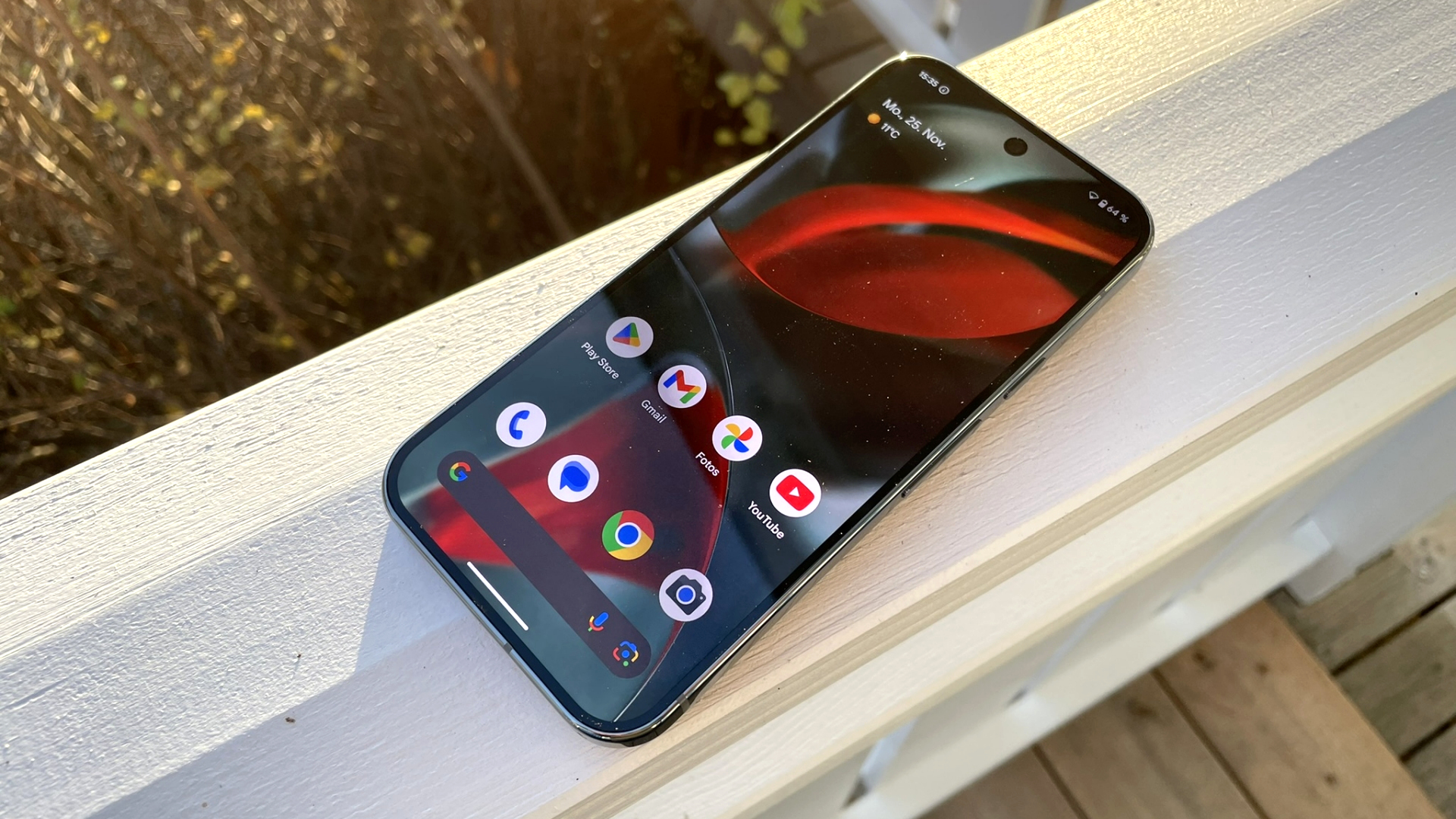
Recenzja smartfona Google Pixel 9 Pro - kompaktowy flagowiec ze świetnymi aparatami
Mini potęga AI.
Mały, a jednak z jeszcze większą wytrzymałością, znacznie jaśniejszym wyświetlaczem i jeszcze większą sztuczną inteligencją: 6,3-calowy Pixel 9 Pro potrafi znacznie więcej niż jego poprzednik i w tym teście udowodnił, że zasługuje na miano jednego z najlepszych kompaktowych smartfonów dostępnych obecnie na rynku. Niestety, nie jest on całkowicie pozbawiony słabości.Manuel Masiero, 👁 Daniel Schmidt (tłumaczenie DeepL / Ninh Duy) Opublikowany 🇺🇸 🇩🇪 ...
Werdykt w sprawie Google Pixel 9 Pro
Google Pixel 9 Pro należy do najlepszych kompaktowych smartfonów dostępnych obecnie na rynku. Jego aparaty fotograficzne świadczą o mocnym ogólnym pakiecie, oferując bardzo dobrą jakość obrazu i obejmując wszystkie scenariusze fotografowania, od makro po teleobiektyw. Wysokiej jakości konstrukcja Pixel 9 Pro, jasny panel OLED, długa żywotność baterii, mnóstwo praktycznych funkcji AI i 7 lat aktualizacji to również bardzo atrakcyjne cechy. Ponadto jego funkcje komunikacyjne nie pozostawiają nic do życzenia, ponieważ telefon obsługuje NFC, UWB, WiFi 7 i wiele częstotliwości komórkowych.
Niestety, wydajność Pixela 9 Pro jest raczej przeciętna ze względu na stosunkowo wolny Google Tensor G4, a jego pamięć masowa UFS-3.1 oznacza również, że nie może nadążyć za innymi flagowymi telefonami na rynku. Szkoda, że podstawowy wariant pamięci masowej ponownie ma tylko 128 GB pamięci masowej, ponieważ w 2024 roku nie jest to już aktualne. Musimy również skrytykować jego powolną prędkość ładowania wynoszącą w najlepszym przypadku 27 watów, ponieważ chociaż chroni to baterię telefonu, może również nieco przetestować Państwa cierpliwość.
Za
Przeciw
Cena i dostępność
Google Pixel 9 Pro można kupić za pośrednictwem większości głównych sprzedawców internetowych, takich jak Amazon, gdzie obecnie kosztuje 987,99 USD.
Porównanie możliwych alternatyw
Obraz | Model / recenzja | Geizhals | Waga | napęd | Ekran |
|---|---|---|---|---|---|
| Google Pixel 9 Pro Google Tensor G4 ⎘ ARM Mali-G715 MP7 ⎘ 16 GB Pamięć, 128 GB | 199 g | 128 GB UFS 3.1 Flash | 6.30" 2856x1280 495 PPI OLED | ||
| Apple iPhone 16 Pro Apple A18 Pro ⎘ Apple A18 Pro GPU ⎘ 8 GB Pamięć, 128 GB NVMe | 199 g | 128 GB NVMe | 6.30" 2622x1206 460 PPI Super Retina XDR OLED | ||
| Google Pixel 8 Pro Google Tensor G3 ⎘ ARM Mali-G715 MP7 ⎘ 12 GB Pamięć, 128 GB | Listenpreis 1099€ | 213 g | 128 GB UFS 3.1 Flash | 6.70" 2992x1344 490 PPI OLED | |
| OnePlus 12 Qualcomm Snapdragon 8 Gen 3 ⎘ Qualcomm Adreno 750 ⎘ 16 GB Pamięć, 512 GB | 220 g | 512 GB UFS 4.0 Flash | 6.82" 3168x1440 510 PPI AMOLED | ||
| Samsung Galaxy S24+ Samsung Exynos 2400 ⎘ Samsung Xclipse 940 ⎘ 12 GB Pamięć, 512 GB | 196 g | 512 GB UFS 4.0 Flash | 6.70" 3120x1440 513 PPI AMOLED | ||
| Xiaomi 14T Pro MediaTek Dimensity 9300+ ⎘ ARM Immortalis-G720 MP12 ⎘ 12 GB Pamięć, 1024 GB | 209 g | 1 TB UFS 4.0 Flash | 6.67" 2712x1220 446 PPI AMOLED |
Spis treści
- Werdykt w sprawie Google Pixel 9 Pro
- Specyfikacje
- Obudowa - 6,3 cala i certyfikat IP68
- Łączność - smartfon Google z chipem UWB i termometrem na podczerwień
- Oprogramowanie - Android 14 i 7 lat aktualizacji dla Pixel 9 Pro
- Komunikacja i GNSS - Szybkie WiFi 7 i dobry GPS
- Funkcje telefonu i jakość połączeń - Pixel 9 Pro z obsługą eSIM
- Aparaty - Google Pixel 9 Pro z potężnym potrójnym aparatem i filmami 8K
- Akcesoria i gwarancja - smartfon Google bez zasilacza
- Urządzenia wejściowe i obsługa - panel LTPO OLED przy 120 Hz w Pixel 9 Pro
- Wyświetlacz - Super jasny tandem OLED wewnątrz Pixel 9 Pro
- Wydajność - Google Tensor G4 skupia się na sztucznej inteligencji
- Emisja - Podwójne głośniki wewnątrz telefonu Pixel
- Żywotność baterii - większa wytrzymałość niż w przypadku poprzednika pomimo mniejszej baterii
- Łączna ocena Notebookcheck
Google Pixel 9 Pro jest następcą modelu Pixel 8 Pro. Chociaż niewiele się zmieniło w jego ogólnym projekcie, jego rozmiar zmniejszył się z 6,7 cala do 6,3 cala. To sprawia, że Pixel 9 Pro ma dokładnie taki sam rozmiar jak Pixel 9 i z kolei jednym z najbardziej kompaktowych smartfonów high-endowych dostępnych obecnie na rynku. Największym obecnie smartfonem Pixel jest Pixel 9 Pro XL.
Nasz testowy kandydat otrzymał nieco większą wydajność w porównaniu do swojego poprzednika dzięki Google Tensor G4a jego nowy panel tandem-OLED sprawia, że świeci jeszcze jaśniej. Chociaż jego bateria zmniejszyła się nieznacznie z 5050 mAh do 4700 mAh, nasz test wykazał, że Pixel 9 Pro ma jeszcze większą wytrzymałość niż Pixel 8 Pro.
Google nie zmieniło nic w kwestii ceny telefonu. Przetestowaliśmy wersję podstawową, która nadal oferuje 128 GB pamięci masowej. Google pobiera za nią 999 USD, czyli tyle samo co za Pixel 8 Pro.
Specyfikacje
Obudowa - 6,3 cala i certyfikat IP68
Jakość wykonania Google Pixel 9 Pro jest imponująca, a jego stopień ochrony IP68 zapewnia skuteczną ochronę przed wodą i kurzem. Przód i tył smartfona są chronione przez taflę szkła Gorilla Glass Victus 2 i są połączone polerowaną metalową ramą. Tylna pokrywa jest wysokiej jakości w dotyku dzięki jedwabisto-matowemu wykończeniu powierzchni. Powłoka sprawia również, że tył jest w dużej mierze odporny na ślady odcisków palców.
Nasze urządzenie testowe posiada kolor Hazel (ciemnoszary). Dostępne są trzy kolejne warianty kolorystyczne telefonu, a mianowicie Porcelain (jasny beż), Rose Quartz i Obsidian (czarny).
Łączność - smartfon Google z chipem UWB i termometrem na podczerwień
Google oferuje Pixel 9 Pro w wariantach 128, 256 i 512 GB pamięci UFS 3.1, każdy z 16 GB pamięci RAM. Nasze urządzenie testowe o pojemności 128 GB kosztuje 999 USD w sklepie Google Store. Pamięci wewnętrznej nie można rozszerzyć.
Oprócz NFC i Bluetooth 5.3, Pixel 9 Pro obsługuje Miracast i Google Cast. Wewnętrzny układ Titan M2 pomaga bezpiecznie przechowywać hasła i dane użytkownika. W przeciwieństwie do Pixel 9model Pro ma układ UWB i termometr na podczerwień.
Port USB telefonu z obsługą OTG jest podłączony zgodnie ze standardem USB 3.2 Gen 1 i dlatego teoretycznie powinien zapewniać szybkość transferu ponad 250 MB/s. Jednak korzystając z naszego zewnętrznego dysku Samsung PSSD T7 SSD, port USB zdołał osiągnąć jedynie 180,1 MB/s podczas testu kopiowania. Nasza zwykła konfiguracja SSD z Samsung 990 Pro nie została rozpoznana jako pamięć masowa, co prawdopodobnie wynika z faktu, że port USB nie mógł zapewnić wystarczającego napięcia wyjściowego.
Oprogramowanie - Android 14 i 7 lat aktualizacji dla Pixel 9 Pro
Według producenta, preinstalowany Android 14 będzie otrzymywał aktualizacje systemu operacyjnego i bezpieczeństwa przez 7 lat. Te ostatnie są wprowadzane co miesiąc. W momencie testowania (koniec listopada) smartfon został już zaktualizowany do wersji Android 15.
Sztuczna inteligencja jest sercem obecnej generacji Pixeli. W rezultacie nie jest zaskoczeniem, że Pixel 9 Pro jest również wyposażony w funkcje AI, takie jak Circle to Search i inteligentny asystent Gemini. Model Pro obejmuje również Gemini Advanced i 2 TB przestrzeni dyskowej w chmurze przez 1 rok bezpłatnie.
Zrównoważony rozwój
Google przywiązuje dużą wagę do zrównoważonego rozwoju nie tylko poprzez długi okres aktualizacji, ale także poprzez wybór materiałów. Według raportu zrównoważonego rozwoju producenta https://sustainability.google/reports/pixel-9-pro-product-environmental-report/32 gramy całkowitej wagi smartfona wynoszącej 199 gramów składa się w 100% z aluminium pochodzącego z recyklingu. Dziesięć z 15 plastikowych elementów Pixela 9 Pro wykonano z materiałów pochodzących z recyklingu. Opakowanie jest całkowicie wolne od plastiku. Google twierdzi, że ślad węglowy telefonu wynosi 72 kg.
Komunikacja i GNSS - Szybkie WiFi 7 i dobry GPS
Pixel 9 Pro to prawdziwy "światowy telefon". Jego zasięg częstotliwości telefonii komórkowej jest tak szeroki, że powinni Państwo być w stanie uzyskać sygnał bezprzewodowy niemal wszędzie.
Na krótkich dystansach smartfon Google działa przy użyciu WiFi 7, a także obsługuje Wi-Fi 6 GHz. W połączeniu z naszym routerem referencyjnym Asus ROG Rapture GT-AXE11000, smartfon osiągnął wysokie i stabilne prędkości transferu danych.
| Networking | |
| Google Pixel 9 Pro | |
| iperf3 transmit AXE11000 | |
| iperf3 receive AXE11000 | |
| iperf3 transmit AXE11000 6GHz | |
| iperf3 receive AXE11000 6GHz | |
| Apple iPhone 16 Pro | |
| iperf3 transmit AXE11000 | |
| iperf3 receive AXE11000 | |
| iperf3 transmit AXE11000 6GHz | |
| iperf3 receive AXE11000 6GHz | |
| Google Pixel 8 Pro | |
| iperf3 transmit AXE11000 | |
| iperf3 receive AXE11000 | |
| iperf3 transmit AXE11000 6GHz | |
| iperf3 receive AXE11000 6GHz | |
| OnePlus 12 | |
| iperf3 transmit AXE11000 | |
| iperf3 receive AXE11000 | |
| Samsung Galaxy S24+ | |
| iperf3 transmit AXE11000 | |
| iperf3 receive AXE11000 | |
| iperf3 transmit AXE11000 6GHz | |
| iperf3 receive AXE11000 6GHz | |
| Xiaomi 14T Pro | |
| iperf3 transmit AXE11000 | |
| iperf3 receive AXE11000 | |
| iperf3 transmit AXE11000 6GHz | |
| iperf3 receive AXE11000 6GHz | |
| Przeciętny Wi-Fi 7 | |
| iperf3 transmit AXE11000 | |
| iperf3 receive AXE11000 | |
| iperf3 transmit AXE11000 6GHz | |
| iperf3 receive AXE11000 6GHz | |
| Średnia w klasie Smartphone | |
| iperf3 transmit AXE11000 | |
| iperf3 receive AXE11000 | |
| iperf3 transmit AXE11000 6GHz | |
| iperf3 receive AXE11000 6GHz | |
Pixel 9 Pro wykorzystuje dwuzakresowy GNSS i wszystkie globalne usługi nawigacji satelitarnej do określenia swojej aktualnej pozycji. W porównaniu do smartwatcha fitness Garmin Venu 2, który służył jako urządzenie referencyjne podczas naszego testu, jego lokalizacja nie zawsze była całkowicie dokładna, ale nadal jest to całkowicie wystarczające do codziennego użytku.
Funkcje telefonu i jakość połączeń - Pixel 9 Pro z obsługą eSIM
Pixel 9 Pro ma jedno gniazdo karty SIM i obsługuje karty eSIM. Alternatywnie można aktywować dwie karty eSIM. Obsługiwane są VoLTE i VoWiFi.
Telefon Google zapewnia bardzo dobrą jakość połączeń i niezawodnie filtruje szumy tła nawet w hałaśliwym otoczeniu. W trybie głośnomówiącym zrozumiałość pozostaje prawie tak samo wysoka.
Aparaty - Google Pixel 9 Pro z potężnym potrójnym aparatem i filmami 8K
Dzięki potrójnej konfiguracji kamer, Pixel 9 Pro ma zoom peryskopowy 48 MP, który w Pixel 9 który umożliwia 5-krotne powiększenie optyczne. Ujęcia można powiększyć cyfrowo do 30x. Bardzo podobają nam się zdjęcia wykonane teleobiektywem w zakresie zoomu optycznego. Pozostałe aparaty z tyłu - szerokokątny obiektyw 50 MP i ultraszerokokątny obiektyw 48 MP - są identyczne jak w Pixel 9. Ogólnie rzecz biorąc, otrzymujemy naprawdę dobre zdjęcia o neutralnych kolorach.
Aparat do selfie w Pixel 9 Pro również zrobił krok naprzód w porównaniu do Pixel 9, ponieważ teraz wykorzystuje obiektyw 42 MP z autofokusem zamiast aparatu 10 MP. Łączenie pikseli służy do łączenia 4 sąsiednich pikseli, co skutkuje zdjęciami o rozdzielczości 10 MP. Charakteryzują się one wysokim poziomem szczegółowości i harmonijnym odwzorowaniem kolorów.
Pixel 9 Pro nagrywa dobrej jakości filmy za pomocą aparatu do selfie i obsługuje do 4K przy 60 klatkach na sekundę. Filmy nie są jednak zbyt dobrze stabilizowane. Jego główny aparat, który ma wyższą rozdzielczość, radzi sobie pod tym względem znacznie lepiej. Korzystając z tego obiektywu, można oczekiwać do 8K przy 30 klatkach na sekundę, podczas gdy limit FPS dla 4K wynosi również 60 klatek na sekundę. Tryby fotografowania wspierane przez sztuczną inteligencję, takie jak noktowizor lub panorama, zachęcają do eksperymentowania i również wyglądają dobrze.
Porównanie zdjęć
Wybierz jedną z dostępnych scen i porównuj powiększone fragmenty zdjęć. Jeden klik w oknie "kliknij aby powiększyć" rozpoczyna cały proces. Lewy klik w oknach poniżej otwiera oryginalne zdjęcia w nowym oknie przeglądarki. Zdjęcia wykonane urządzeniem z niniejszej recenzji można zobaczyć w większym oknie poniżej.
Daylight photo 1Daylight photo 2Ultra-wide angle5x zoomLow-light photoW naszym laboratorium testowym sprawdziliśmy, jak dobrze główna kamera może odtworzyć kolory referencyjne z tabeli testowej ColorChecker w kontrolowanych warunkach oświetleniowych. Ogólnie rzecz biorąc, nie zauważyliśmy większych anomalii. Wystąpiły jedynie niewielkie odchylenia od celu (Delta-E > 10), jeśli chodzi o jasne kolory cyjanu i ciemnobrązowe odcienie.


Akcesoria i gwarancja - smartfon Google bez zasilacza
W cienkim opakowaniu Pixel 9 Pro znajduje się niewiele akcesoriów. Są one ograniczone do kabla USB-C (USB 2.0), kilku ulotek i pinezki SIM. Pasujące akcesoria, takie jak 45-watowy zasilacz i różne pokrowce ochronne, są dostępne w sklepie Google.
Google Pixel 9 Pro objęty jest 12-miesięczną gwarancją. Producent zamierza dostarczać oryginalne części zamienne przez 7 lat - nie bezpośrednio, ale za pośrednictwem sklepu internetowego swojego partnera iFixit.
Urządzenia wejściowe i obsługa - panel LTPO OLED przy 120 Hz w Pixel 9 Pro
Dzięki częstotliwości odświeżania 120 Hz, 161-milimetrowy wyświetlacz LTPO Pixel 9 Pro jest bardzo płynny w obsłudze, a wejścia są precyzyjnie wdrażane na całym ekranie dotykowym. Jego liniowy silnik wibracyjny zapewnia precyzyjne sprzężenie zwrotne.
Czujnik linii papilarnych zintegrowany z przyciskiem zasilania działa przy użyciu czujnika ultradźwiękowego, który zapewnia większą dokładność w porównaniu z czujnikiem optycznym. Podczas naszych testów palce były rozpoznawane bardzo szybko. Uwierzytelnianie biometryczne jest również możliwe poprzez rozpoznawanie twarzy 2D za pomocą aparatu do selfie. Chociaż jest to znacznie mniej bezpieczne, odblokowuje smartfon równie niezawodnie w dobrych warunkach oświetleniowych.
Wyświetlacz - Super jasny tandem OLED wewnątrz Pixel 9 Pro
6,3-calowy panel OLED telefonu ma rozdzielczość 2856 x 1280 pikseli, co daje mu wysoką gęstość pikseli 495 PPI. Oprócz HDR10 i HDR10+ obsługuje również HLG.
W przeciwieństwie do Pixel 9pixel 9 Pro ma panel LTPO OLED, dzięki czemu może dynamicznie regulować częstotliwość odświeżania w zakresie od 1 do 120 Hz. Radzi sobie również lepiej niż standardowy Pixel z i tak już rekordowymi poziomami jasności.
Podczas wyświetlania w pełni białego tła, Pixel 9 Pro może pochwalić się średnią jasnością 2016 cd/m², co jest niezrównane w swojej klasie. Niestety, jasność nie jest zbyt równomiernie rozłożona (podświetlenie tylko 84%). Podczas wyświetlania mniejszych fragmentów obrazu (APL18), smartfon Google zwiększa się do ogromnych 3101 cd/m². W trybie HDR nadal mierzyliśmy doskonałe 2,970 cd/m².
Panel OLED Pixela 9 Pro migocze z częstotliwością 240 Hz na wszystkich zmierzonych poziomach jasności, co nie jest szczególnie wysoką wartością. Amplituda wynosi jednak poniżej 20 procent, więc istnieje duża szansa, że nawet wrażliwi użytkownicy nie będą odczuwać żadnych dolegliwości. Jeśli jednak mają Państwo wątpliwości, warto wypróbować smartfon przed zakupem.
| |||||||||||||||||||||||||
rozświetlenie: 84 %
na akumulatorze: 2083 cd/m²
kontrast: ∞:1 (czerń: 0 cd/m²)
ΔE Color 0.7 | 0.5-29.43 Ø4.87
ΔE Greyscale 1.1 | 0.5-98 Ø5.1
99.1% sRGB (Calman 2D)
Gamma: 2.22
| Google Pixel 9 Pro OLED, 2856x1280, 6.3" | Apple iPhone 16 Pro Super Retina XDR OLED, 2622x1206, 6.3" | Google Pixel 8 Pro OLED, 2992x1344, 6.7" | OnePlus 12 AMOLED, 3168x1440, 6.8" | Samsung Galaxy S24+ AMOLED, 3120x1440, 6.7" | Xiaomi 14T Pro AMOLED, 2712x1220, 6.7" | |
|---|---|---|---|---|---|---|
| Screen | -34% | -41% | -58% | -106% | -18% | |
| Brightness middle | 2083 | 1034 -50% | 1510 -28% | 1026 -51% | 1358 -35% | 953 -54% |
| Brightness | 2016 | 1034 -49% | 1467 -27% | 991 -51% | 1358 -33% | 961 -52% |
| Brightness Distribution | 84 | 98 17% | 92 10% | 91 8% | 92 10% | 95 13% |
| Black Level * | ||||||
| Colorchecker dE 2000 * | 0.7 | 0.98 -40% | 1.1 -57% | 1.19 -70% | 3 -329% | 0.9 -29% |
| Colorchecker dE 2000 max. * | 2 | 2.76 -38% | 3.8 -90% | 3.3 -65% | 4.4 -120% | 1.5 25% |
| Greyscale dE 2000 * | 1.1 | 1.6 -45% | 1.7 -55% | 2.4 -118% | 2.5 -127% | 1.2 -9% |
| Gamma | 2.22 99% | 2.17 101% | 2.23 99% | 2.24 98% | 1.98 111% | 2.22 99% |
| CCT | 6560 99% | 6638 98% | 6670 97% | 6920 94% | 6656 98% | 6580 99% |
| Color Space (Percent of sRGB) | 99.5 |
* ... im mniej tym lepiej
Migotanie ekranu / PWM (modulacja szerokości impulsu)
| Wykryto migotanie ekranu/wykryto PWM | 240 Hz Amplitude: 16.62 % | ||
Podświetlenie wyświetlacza miga z częstotliwością 240 Hz (najgorszy przypadek, np. przy użyciu PWM) . Częstotliwość 240 Hz jest stosunkowo niska, więc wrażliwi użytkownicy prawdopodobnie zauważą migotanie i odczują zmęczenie oczu przy podanym ustawieniu jasności i poniżej. Dla porównania: 53 % wszystkich testowanych urządzeń nie używa PWM do przyciemniania wyświetlacza. Jeśli wykryto PWM, zmierzono średnio 8516 (minimum: 5 - maksimum: 343500) Hz. | |||
Seria pomiarów ze stałym poziomem powiększenia i różnymi ustawieniami jasności (krzywa amplitudy przy minimalnej jasności wygląda na płaską, ale jest to spowodowane skalowaniem. Pole informacyjne pokazuje powiększoną wersję amplitudy przy minimalnej jasności).
Pixel 9 Pro oferuje użytkownikom tylko kilka opcji dostosowania wyświetlacza - są tylko dwa profile kolorów(Naturalny, Adaptacyjny). Z drugiej strony, nie trzeba wiele konfigurować, ponieważ odwzorowanie kolorów panelu OLED jest naprawdę całkiem dobre i jest najdokładniejsze przy wybranym trybie kolorów Natural.
Wyświetl czasy reakcji
| ↔ Czas reakcji od czerni do bieli | ||
|---|---|---|
| 1.04 ms ... wzrost ↗ i spadek ↘ łącznie | ↗ 0.5135 ms wzrost | |
| ↘ 0.53 ms upadek | ||
| W naszych testach ekran wykazuje bardzo szybką reakcję i powinien bardzo dobrze nadawać się do szybkich gier. Dla porównania, wszystkie testowane urządzenia wahają się od 0.1 (minimum) do 240 (maksimum) ms. » 3 % wszystkich urządzeń jest lepszych. Oznacza to, że zmierzony czas reakcji jest lepszy od średniej wszystkich testowanych urządzeń (20.8 ms). | ||
| ↔ Czas reakcji 50% szarości do 80% szarości | ||
| 3.28 ms ... wzrost ↗ i spadek ↘ łącznie | ↗ 1.589 ms wzrost | |
| ↘ 1.693 ms upadek | ||
| W naszych testach ekran wykazuje bardzo szybką reakcję i powinien bardzo dobrze nadawać się do szybkich gier. Dla porównania, wszystkie testowane urządzenia wahają się od 0.165 (minimum) do 636 (maksimum) ms. » 11 % wszystkich urządzeń jest lepszych. Oznacza to, że zmierzony czas reakcji jest lepszy od średniej wszystkich testowanych urządzeń (32.5 ms). | ||
Wydajność - Google Tensor G4 skupia się na sztucznej inteligencji
Pixel 9 Pro opiera się na wewnętrznym SoC o nazwie Google Tensor G4 o którym mówi się, że charakteryzuje się wysoką wydajnością AI. Niemniej jednak smartfon Google nie okazał się najszybszy w benchmarkach AI. W "prestiżowych" benchmarkach, takich jak AnTuTu v10, Tensor G4 nie był w stanie dotrzymać kroku żadnemu obecnemu SoC z wyższej półki, ponieważ wszystkie oferują znacznie większą moc procesora.
| UL Procyon AI Inference for Android - Overall Score NNAPI | |
| Xiaomi 14T Pro | |
| Google Pixel 9 Pro | |
| Przeciętny Google Tensor G4 (35227 - 36578, n=3) | |
| Google Pixel 8 Pro | |
| OnePlus 12 | |
| Średnia w klasie Smartphone (1267 - 81594, n=153, ostatnie 2 lata) | |
| Samsung Galaxy S24+ | |
| Geekbench AI | |
| Single Precision TensorFlow NNAPI 1.1 | |
| Apple iPhone 16 Pro | |
| Xiaomi 14T Pro | |
| Średnia w klasie Smartphone (122 - 4619, n=45, ostatnie 2 lata) | |
| Przeciętny Google Tensor G4 (376 - 771, n=4) | |
| OnePlus 12 | |
| Google Pixel 9 Pro | |
| Half Precision TensorFlow NNAPI 1.1 | |
| Apple iPhone 16 Pro | |
| Przeciętny Google Tensor G4 (4176 - 4754, n=4) | |
| Xiaomi 14T Pro | |
| Google Pixel 9 Pro | |
| Średnia w klasie Smartphone (122 - 32432, n=45, ostatnie 2 lata) | |
| OnePlus 12 | |
| Quantized TensorFlow NNAPI 1.1 | |
| Apple iPhone 16 Pro | |
| Przeciętny Google Tensor G4 (6269 - 6451, n=4) | |
| Google Pixel 9 Pro | |
| Średnia w klasie Smartphone (118 - 44657, n=45, ostatnie 2 lata) | |
| Xiaomi 14T Pro | |
| OnePlus 12 | |
Z jego ARM Mali-G715 MP7, Google Tensor Google Tensor G4 również osiągnął tylko średnie wyniki, jeśli chodzi o wydajność GPU. Przynajmniej to wystarczyło na niewielki wzrost wydajności w porównaniu do Pixel 8 Pro.
GFXBench (DX / GLBenchmark) 2.7: T-Rex Onscreen | 1920x1080 T-Rex Offscreen
GFXBench 3.0: on screen Manhattan Onscreen OGL | 1920x1080 1080p Manhattan Offscreen
GFXBench 3.1: on screen Manhattan ES 3.1 Onscreen | 1920x1080 Manhattan ES 3.1 Offscreen
GFXBench: on screen Car Chase Onscreen | 1920x1080 Car Chase Offscreen | on screen Aztec Ruins High Tier Onscreen | 2560x1440 Aztec Ruins High Tier Offscreen | on screen Aztec Ruins Normal Tier Onscreen | 1920x1080 Aztec Ruins Normal Tier Offscreen | 3840x2160 4K Aztec Ruins High Tier Offscreen
| 3DMark / Wild Life Extreme Unlimited | |
| OnePlus 12 | |
| Samsung Galaxy S24+ | |
| Apple iPhone 16 Pro | |
| Xiaomi 14T Pro | |
| Google Pixel 9 Pro | |
| Google Pixel 8 Pro | |
| 3DMark / Wild Life Extreme | |
| Apple iPhone 16 Pro | |
| OnePlus 12 | |
| Samsung Galaxy S24+ | |
| Xiaomi 14T Pro | |
| Google Pixel 9 Pro | |
| Google Pixel 8 Pro | |
| 3DMark / Wild Life Unlimited Score | |
| Apple iPhone 16 Pro | |
| OnePlus 12 | |
| Xiaomi 14T Pro | |
| Samsung Galaxy S24+ | |
| Google Pixel 9 Pro | |
| Google Pixel 8 Pro | |
| 3DMark / Steel Nomad Light Unlimited Score | |
| Apple iPhone 16 Pro | |
| OnePlus 12 | |
| Xiaomi 14T Pro | |
| Google Pixel 9 Pro | |
| 3DMark / Steel Nomad Light Score | |
| Apple iPhone 16 Pro | |
| OnePlus 12 | |
| Xiaomi 14T Pro | |
| Google Pixel 9 Pro | |
| 3DMark / Sling Shot Extreme (ES 3.1) Unlimited Physics | |
| Xiaomi 14T Pro | |
| OnePlus 12 | |
| Samsung Galaxy S24+ | |
| Google Pixel 9 Pro | |
| Google Pixel 8 Pro | |
| 3DMark / Sling Shot Extreme (ES 3.1) Unlimited Graphics | |
| OnePlus 12 | |
| Samsung Galaxy S24+ | |
| Xiaomi 14T Pro | |
| Google Pixel 9 Pro | |
| Google Pixel 8 Pro | |
| 3DMark / Sling Shot Extreme (ES 3.1) Unlimited | |
| OnePlus 12 | |
| Xiaomi 14T Pro | |
| Samsung Galaxy S24+ | |
| Google Pixel 9 Pro | |
| Google Pixel 8 Pro | |
| GFXBench (DX / GLBenchmark) 2.7 / T-Rex Onscreen | |
| Google Pixel 8 Pro | |
| Google Pixel 9 Pro | |
| Xiaomi 14T Pro | |
| Samsung Galaxy S24+ | |
| OnePlus 12 | |
| Apple iPhone 16 Pro | |
| GFXBench (DX / GLBenchmark) 2.7 / T-Rex Offscreen | |
| Xiaomi 14T Pro | |
| OnePlus 12 | |
| Apple iPhone 16 Pro | |
| Google Pixel 9 Pro | |
| Samsung Galaxy S24+ | |
| Google Pixel 8 Pro | |
| GFXBench 3.0 / Manhattan Onscreen OGL | |
| Google Pixel 8 Pro | |
| Xiaomi 14T Pro | |
| Google Pixel 9 Pro | |
| Samsung Galaxy S24+ | |
| OnePlus 12 | |
| Apple iPhone 16 Pro | |
| GFXBench 3.0 / 1080p Manhattan Offscreen | |
| Xiaomi 14T Pro | |
| Samsung Galaxy S24+ | |
| Apple iPhone 16 Pro | |
| OnePlus 12 | |
| Google Pixel 9 Pro | |
| Google Pixel 8 Pro | |
| GFXBench 3.1 / Manhattan ES 3.1 Onscreen | |
| Xiaomi 14T Pro | |
| Samsung Galaxy S24+ | |
| Google Pixel 8 Pro | |
| Google Pixel 9 Pro | |
| OnePlus 12 | |
| Apple iPhone 16 Pro | |
| GFXBench 3.1 / Manhattan ES 3.1 Offscreen | |
| Xiaomi 14T Pro | |
| Samsung Galaxy S24+ | |
| Apple iPhone 16 Pro | |
| OnePlus 12 | |
| Google Pixel 9 Pro | |
| Google Pixel 8 Pro | |
| GFXBench / Car Chase Onscreen | |
| Xiaomi 14T Pro | |
| Google Pixel 8 Pro | |
| Samsung Galaxy S24+ | |
| OnePlus 12 | |
| Apple iPhone 16 Pro | |
| Google Pixel 9 Pro | |
| GFXBench / Car Chase Offscreen | |
| Apple iPhone 16 Pro | |
| OnePlus 12 | |
| Xiaomi 14T Pro | |
| Samsung Galaxy S24+ | |
| Google Pixel 9 Pro | |
| Google Pixel 8 Pro | |
| GFXBench / Aztec Ruins High Tier Onscreen | |
| Xiaomi 14T Pro | |
| Samsung Galaxy S24+ | |
| Google Pixel 8 Pro | |
| OnePlus 12 | |
| Apple iPhone 16 Pro | |
| Google Pixel 9 Pro | |
| GFXBench / Aztec Ruins High Tier Offscreen | |
| OnePlus 12 | |
| Samsung Galaxy S24+ | |
| Xiaomi 14T Pro | |
| Apple iPhone 16 Pro | |
| Google Pixel 9 Pro | |
| Google Pixel 8 Pro | |
| GFXBench / Aztec Ruins Normal Tier Onscreen | |
| Xiaomi 14T Pro | |
| Google Pixel 8 Pro | |
| Samsung Galaxy S24+ | |
| Google Pixel 9 Pro | |
| OnePlus 12 | |
| Apple iPhone 16 Pro | |
| GFXBench / Aztec Ruins Normal Tier Offscreen | |
| OnePlus 12 | |
| Xiaomi 14T Pro | |
| Apple iPhone 16 Pro | |
| Samsung Galaxy S24+ | |
| Google Pixel 9 Pro | |
| Google Pixel 8 Pro | |
| GFXBench / 4K Aztec Ruins High Tier Offscreen | |
| OnePlus 12 | |
| Samsung Galaxy S24+ | |
| Xiaomi 14T Pro | |
| Apple iPhone 16 Pro | |
| Google Pixel 9 Pro | |
| Google Pixel 8 Pro | |
Pixel 9 Pro zapewnił jedynie przeciętną wydajność podczas testów porównawczych przeglądarki. Nie jest to jednak zauważalne podczas surfowania po Internecie, ponieważ strony ładują się szybko.
| Jetstream 2 - 2.0 Total Score | |
| Apple iPhone 16 Pro (Safari 18) | |
| OnePlus 12 (Chrome 126) | |
| Samsung Galaxy S24+ (Chrome 121) | |
| Średnia w klasie Smartphone (13.8 - 387, n=171, ostatnie 2 lata) | |
| Przeciętny Google Tensor G4 (107.5 - 117.5, n=3) | |
| Google Pixel 9 Pro (Chrome 131.0.6778.81) | |
| Google Pixel 8 Pro (Chrome 117) | |
| Xiaomi 14T Pro (Chrome 129) | |
| Speedometer 2.0 - Result | |
| Apple iPhone 16 Pro (Safari 18) | |
| OnePlus 12 (Chrome 126) | |
| Samsung Galaxy S24+ (Chrome 121) | |
| Google Pixel 9 Pro (Chrome 131.0.6778.81) | |
| Przeciętny Google Tensor G4 (182 - 207, n=3) | |
| Średnia w klasie Smartphone (15.2 - 569, n=151, ostatnie 2 lata) | |
| Google Pixel 8 Pro (Chrome 117) | |
| Xiaomi 14T Pro (Chrome 129) | |
| Speedometer 3.0 - Score | |
| Apple iPhone 16 Pro (Safari 18) | |
| Google Pixel 9 Pro (Chrome 131.0.6778.81) | |
| Przeciętny Google Tensor G4 (14.9 - 15.8, n=3) | |
| OnePlus 12 (Chrome 126) | |
| Średnia w klasie Smartphone (1.03 - 34, n=90, ostatnie 2 lata) | |
| Xiaomi 14T Pro (Chrome 129) | |
| WebXPRT 4 - Overall | |
| Apple iPhone 16 Pro (Safari 18) | |
| OnePlus 12 (Chrome 126) | |
| Samsung Galaxy S24+ (Chrome 121) | |
| Średnia w klasie Smartphone (22 - 271, n=162, ostatnie 2 lata) | |
| Przeciętny Google Tensor G4 (103 - 112, n=3) | |
| Google Pixel 9 Pro (Chrome 131.0.6778.81) | |
| Google Pixel 8 Pro (Chrome 117) | |
| Xiaomi 14T Pro (Chrome 129) | |
| Octane V2 - Total Score | |
| Apple iPhone 16 Pro (Safari 18) | |
| OnePlus 12 (Chrome 126) | |
| Samsung Galaxy S24+ (Chrome 121) | |
| Google Pixel 9 Pro (Chrome 131.0.6778.81) | |
| Przeciętny Google Tensor G4 (56737 - 62374, n=4) | |
| Google Pixel 8 Pro (Chrome 117) | |
| Średnia w klasie Smartphone (2228 - 100368, n=210, ostatnie 2 lata) | |
| Xiaomi 14T Pro (Chrome 129) | |
| Mozilla Kraken 1.1 - Total | |
| Xiaomi 14T Pro (Chrome 129) | |
| Średnia w klasie Smartphone (277 - 28190, n=171, ostatnie 2 lata) | |
| Google Pixel 8 Pro (Chrome 117) | |
| Przeciętny Google Tensor G4 (699 - 745, n=3) | |
| Google Pixel 9 Pro (Chrome 131.0.6778.81) | |
| Samsung Galaxy S24+ (Chrome 121) | |
| OnePlus 12 (Chrome 126) | |
| Apple iPhone 16 Pro (Safari 18) | |
* ... im mniej tym lepiej
Chociaż pamięć masowa UFS 3.1 smartfona zapewnia stosunkowo krótki czas ładowania, pozostaje ona daleko w tyle za przepustowością danych innych modeli z wyższej półki.
| Google Pixel 9 Pro | Google Pixel 8 Pro | OnePlus 12 | Samsung Galaxy S24+ | Xiaomi 14T Pro | Przeciętny 128 GB UFS 3.1 Flash | Średnia w klasie Smartphone | |
|---|---|---|---|---|---|---|---|
| AndroBench 3-5 | -11% | 381% | 147% | 462% | 48% | 155% | |
| Sequential Read 256KB | 1717.9 | 1501.13 -13% | 3297.57 92% | 2450.9 43% | 3687.54 115% | 1602 ? -7% | 2030 ? 18% |
| Sequential Write 256KB | 253.53 | 257.28 1% | 3246.21 1180% | 1523.87 501% | 3908.34 1442% | 748 ? 195% | 1646 ? 549% |
| Random Read 4KB | 218.41 | 156.16 -29% | 438.5 101% | 387.42 77% | 441.21 102% | 243 ? 11% | 282 ? 29% |
| Random Write 4KB | 261.55 | 258.92 -1% | 652.8 150% | 176.19 -33% | 752.87 188% | 244 ? -7% | 325 ? 24% |
Emisja - Podwójne głośniki wewnątrz telefonu Pixel
Temperatura
Pixel 9 Pro może się dość mocno nagrzewać podczas użytkowania. Zmierzyliśmy temperatury powierzchni do 42,8 °C pod obciążeniem. Testy obciążeniowe 3DMark wykazały, że smartfon dławi swoją wydajność po krótkim czasie, gdy jest poddawany stresowi. W zależności od scenariusza testowego, dostępne były tylko dwie trzecie mocy wyjściowej.
(±) Maksymalna temperatura w górnej części wynosi 42.8 °C / 109 F, w porównaniu do średniej 35.1 °C / 95 F , począwszy od 21.9 do 63.7 °C dla klasy Smartphone.
(±) Dno nagrzewa się maksymalnie do 42.4 °C / 108 F, w porównaniu do średniej 33.9 °C / 93 F
(+) W stanie bezczynności średnia temperatura górnej części wynosi 24.6 °C / 76 F, w porównaniu ze średnią temperaturą urządzenia wynoszącą 32.8 °C / ### class_avg_f### F.
3DMark Steel Nomad Stress Test
| 3DMark | |
| Wild Life Stress Test Stability | |
| Apple iPhone 16 Pro | |
| Samsung Galaxy S24+ | |
| Google Pixel 8 Pro | |
| OnePlus 12 | |
| Google Pixel 9 Pro | |
| Xiaomi 14T Pro | |
| Wild Life Extreme Stress Test | |
| Samsung Galaxy S24+ | |
| OnePlus 12 | |
| Google Pixel 8 Pro | |
| Google Pixel 9 Pro | |
| Xiaomi 14T Pro | |
| Apple iPhone 16 Pro | |
| Solar Bay Stress Test Stability | |
| Xiaomi 14T Pro | |
| Apple iPhone 16 Pro | |
| Samsung Galaxy S24+ | |
| Steel Nomad Light Stress Test Stability | |
| OnePlus 12 | |
| Xiaomi 14T Pro | |
| Google Pixel 9 Pro | |
| Apple iPhone 16 Pro | |
Głośniki
Głośniki stereo Pixel 9 Pro zapewniają zrównoważone wysokie i średnie tony, podczas gdy niskie tony są nieco niedoreprezentowane. Niemniej jednak, jak na kompaktowy smartfon, telefon Pixel nie radzi sobie źle, jeśli chodzi o tony niskie.
Zewnętrzne urządzenia audio można podłączyć przez USB-C lub Bluetooth 5.3. Pixel 9 Pro obsługuje kodeki Bluetooth SBC, AAC, LDAC, aptX, aptX HD, LC3 i Opus.
Google Pixel 9 Pro analiza dźwięku
(+) | głośniki mogą odtwarzać stosunkowo głośno (90.6 dB)
Bas 100 - 315 Hz
(-) | prawie brak basu - średnio 21.5% niższa od mediany
(±) | liniowość basu jest średnia (7.3% delta do poprzedniej częstotliwości)
Średnie 400 - 2000 Hz
(+) | zbalansowane środki średnie - tylko 3.1% od mediany
(+) | średnie są liniowe (5% delta do poprzedniej częstotliwości)
Wysokie 2–16 kHz
(±) | wyższe maksima - średnio 7.6% wyższe od mediany
(+) | wzloty są liniowe (5.1% delta do poprzedniej częstotliwości)
Ogólnie 100 - 16.000 Hz
(±) | liniowość ogólnego dźwięku jest średnia (16.8% różnicy w stosunku do mediany)
W porównaniu do tej samej klasy
» 7% wszystkich testowanych urządzeń w tej klasie było lepszych, 6% podobnych, 87% gorszych
» Najlepszy miał deltę 12%, średnia wynosiła ###średnia###%, najgorsza wynosiła 134%
W porównaniu do wszystkich testowanych urządzeń
» 27% wszystkich testowanych urządzeń było lepszych, 7% podobnych, 66% gorszych
» Najlepszy miał deltę 4%, średnia wynosiła ###średnia###%, najgorsza wynosiła 134%
Samsung Galaxy S24+ analiza dźwięku
(+) | głośniki mogą odtwarzać stosunkowo głośno (92.1 dB)
Bas 100 - 315 Hz
(-) | prawie brak basu - średnio 22.3% niższa od mediany
(+) | bas jest liniowy (5.2% delta do poprzedniej częstotliwości)
Średnie 400 - 2000 Hz
(±) | zmniejszone średnie - średnio 6.5% niższe niż mediana
(+) | średnie są liniowe (4.8% delta do poprzedniej częstotliwości)
Wysokie 2–16 kHz
(±) | wyższe maksima - średnio 5.6% wyższe od mediany
(+) | wzloty są liniowe (1.8% delta do poprzedniej częstotliwości)
Ogólnie 100 - 16.000 Hz
(±) | liniowość ogólnego dźwięku jest średnia (17.3% różnicy w stosunku do mediany)
W porównaniu do tej samej klasy
» 10% wszystkich testowanych urządzeń w tej klasie było lepszych, 7% podobnych, 83% gorszych
» Najlepszy miał deltę 12%, średnia wynosiła ###średnia###%, najgorsza wynosiła 134%
W porównaniu do wszystkich testowanych urządzeń
» 30% wszystkich testowanych urządzeń było lepszych, 8% podobnych, 62% gorszych
» Najlepszy miał deltę 4%, średnia wynosiła ###średnia###%, najgorsza wynosiła 134%
Żywotność baterii - większa wytrzymałość niż w przypadku poprzednika pomimo mniejszej baterii
Zużycie energii
Pixel 9 Pro jest łatwy, jeśli chodzi o szybkość ładowania. Można to zrobić przy maksymalnej mocy 27 watów, co wciąż jest nieco więcej niż w przypadku Apple iPhone 16 Pro który obsługuje tylko 25 watów. Jednak żaden z nich nie zbliża się do prędkości ładowania wielu innych flagowych telefonów.
W naszym teście jeden cykl ładowania przy użyciu 65-watowego zasilacza Ugreen CD275 zajął 1:38 godziny. Po godzinie smartfon był naładowany w 80%.
| wyłączony / stan wstrzymania | |
| luz | |
| obciążenie |
|
Legenda:
min: | |
| Google Pixel 9 Pro 4700 mAh | Apple iPhone 16 Pro 3582 mAh | Google Pixel 8 Pro 5050 mAh | OnePlus 12 5400 mAh | Samsung Galaxy S24+ 4900 mAh | Xiaomi 14T Pro 5000 mAh | Przeciętny Google Tensor G4 | Średnia w klasie Smartphone | |
|---|---|---|---|---|---|---|---|---|
| Power Consumption | 14% | -6% | -21% | 19% | -6% | -31% | -12% | |
| Idle Minimum * | 0.59 | 0.4 32% | 0.63 -7% | 1.3 -120% | 0.43 27% | 0.95 -61% | 0.753 ? -28% | 0.872 ? -48% |
| Idle Average * | 1.1 | 0.6 45% | 1.47 -34% | 0.95 14% | 0.84 24% | 1.2 -9% | 1.778 ? -62% | 1.438 ? -31% |
| Idle Maximum * | 1.2 | 1 17% | 1.55 -29% | 1.12 7% | 0.95 21% | 1.27 -6% | 2.04 ? -70% | 1.582 ? -32% |
| Load Average * | 7.15 | 11 -54% | 8.45 -18% | 10.55 -48% | 6.76 5% | 5.95 17% | 7.28 ? -2% | 6.99 ? 2% |
| Load Maximum * | 20.37 | 14.4 29% | 8.63 58% | 11.72 42% | 16.42 19% | 14.02 31% | 18.8 ? 8% | 10.4 ? 49% |
* ... im mniej tym lepiej
Power consumption: Geekbench (150 cd/m²)
Power consumption: GFXbench (150 cd/m²)
Czas trwania
Podobnie jak Pixel 9pixel 9 Pro osiąga podobnie imponujące czasy pracy na baterii. W rzeczywistości jego ekran LTPO OLED sprawia, że są one jeszcze lepsze. Podczas symulowanego testu surfowania po sieci, nasz testowy kandydat wytrzymał prawie 17 godzin, czyli o pół godziny dłużej niż standardowy model.
Łączna ocena Notebookcheck
Jasny wyświetlacz, długi czas pracy na baterii, świetne aparaty, wyjątkowo długi okres aktualizacji - Google Pixel 9 Pro zdobywa punkty we wszystkich ważnych dyscyplinach, co czyni go jednym z najlepszych obecnie dostępnych kompaktowych smartfonów. Jednak wydajność SoC musi zostać nieco ograniczona, a prędkość ładowania nie jest szczególnie szybka.
Google Pixel 9 Pro
- 02/12/2024 v8
Manuel Masiero
Przezroczystość
Wyboru urządzeń do recenzji dokonuje nasza redakcja. Próbka testowa została udostępniona autorowi jako pożyczka od producenta lub sprzedawcy detalicznego na potrzeby tej recenzji. Pożyczkodawca nie miał wpływu na tę recenzję, producent nie otrzymał też kopii tej recenzji przed publikacją. Nie było obowiązku publikowania tej recenzji. Nigdy nie przyjmujemy rekompensaty ani płatności w zamian za nasze recenzje. Jako niezależna firma medialna, Notebookcheck nie podlega władzy producentów, sprzedawców detalicznych ani wydawców.
Tak testuje Notebookcheck
Każdego roku Notebookcheck niezależnie sprawdza setki laptopów i smartfonów, stosując standardowe procedury, aby zapewnić porównywalność wszystkich wyników. Od około 20 lat stale rozwijamy nasze metody badawcze, ustanawiając przy tym standardy branżowe. W naszych laboratoriach testowych doświadczeni technicy i redaktorzy korzystają z wysokiej jakości sprzętu pomiarowego. Testy te obejmują wieloetapowy proces walidacji. Nasz kompleksowy system ocen opiera się na setkach uzasadnionych pomiarów i benchmarków, co pozwala zachować obiektywizm.







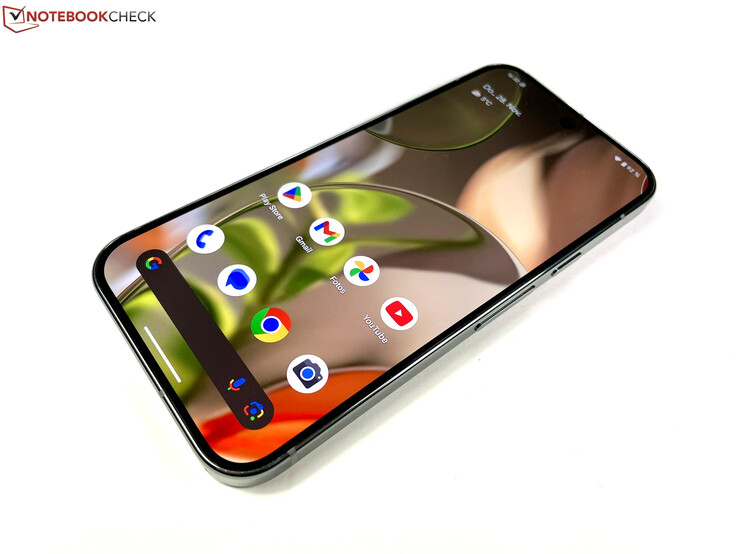





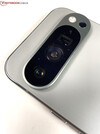
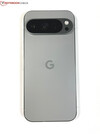

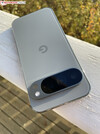


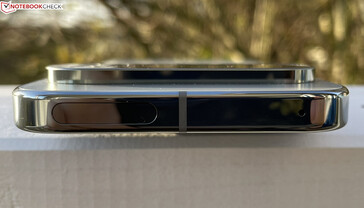
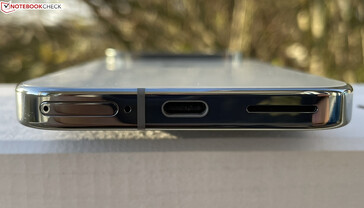
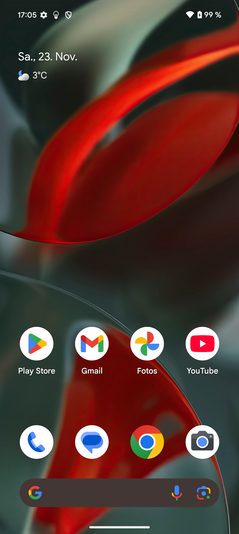
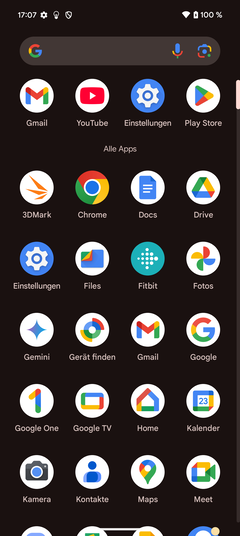
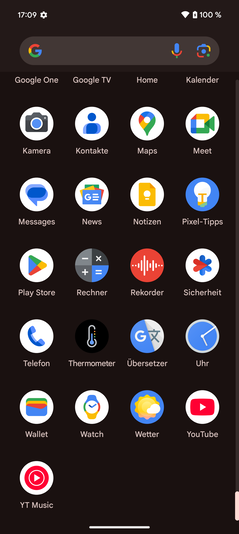
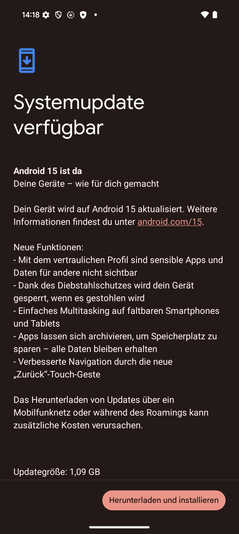

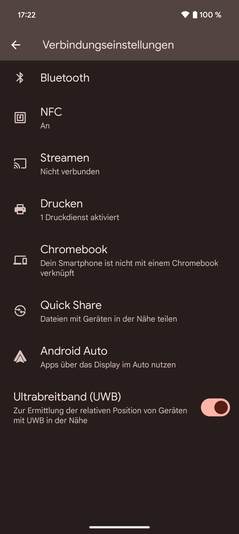
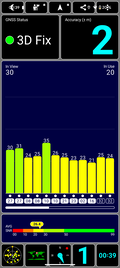
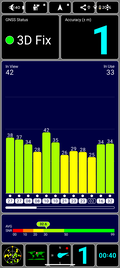
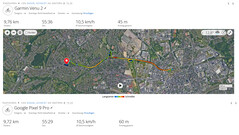










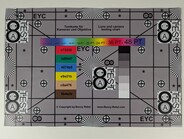




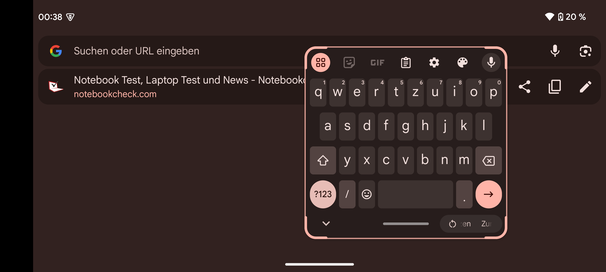
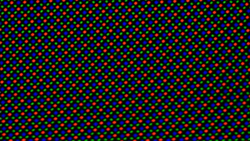
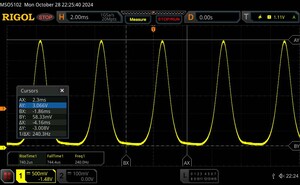







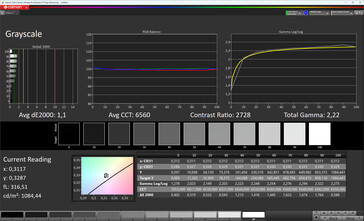
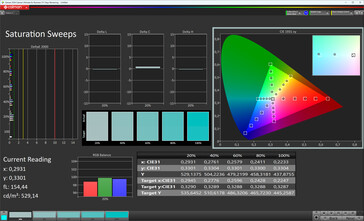
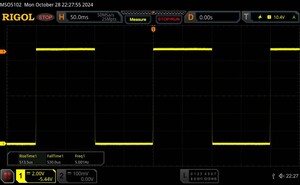
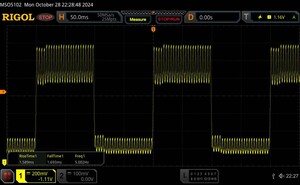
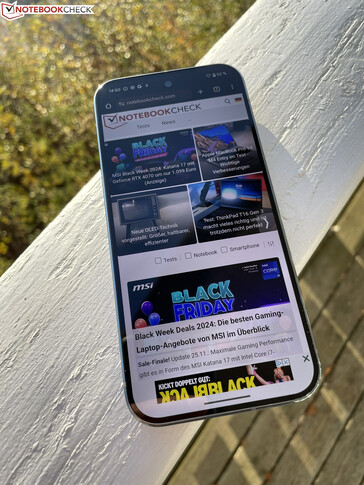
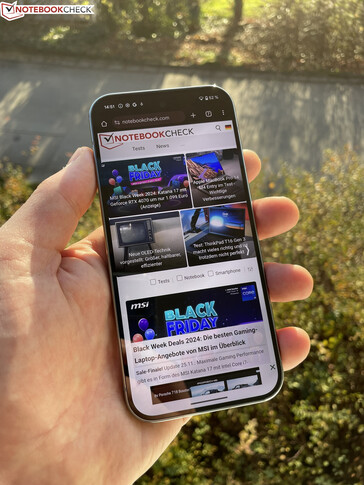

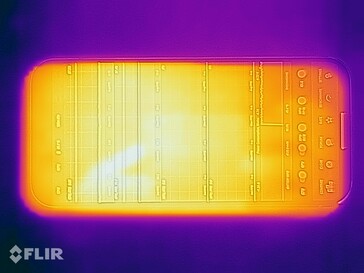
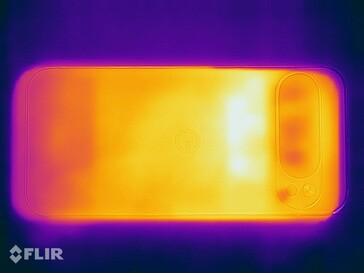
 Total Sustainability Score:
Total Sustainability Score: 








